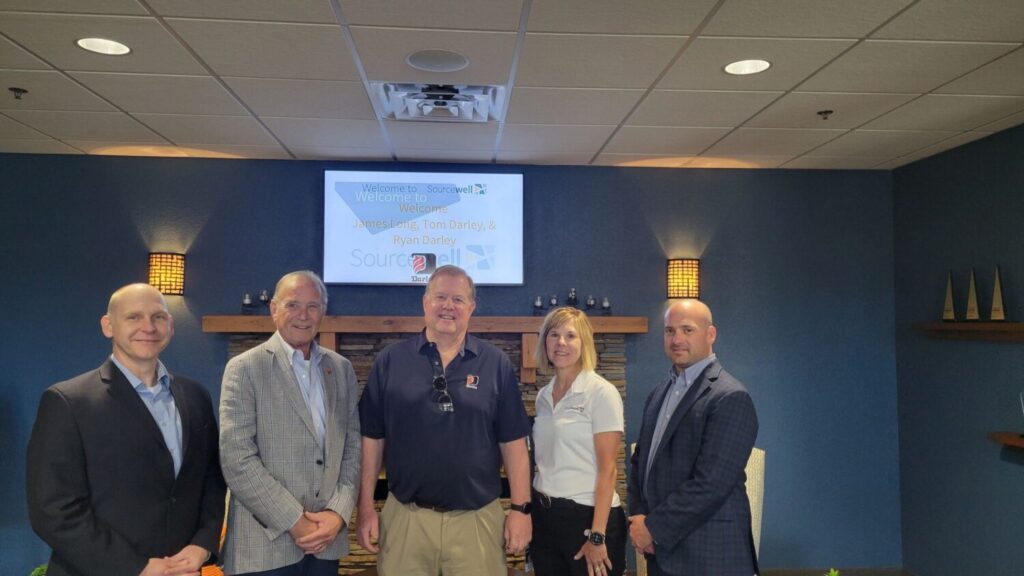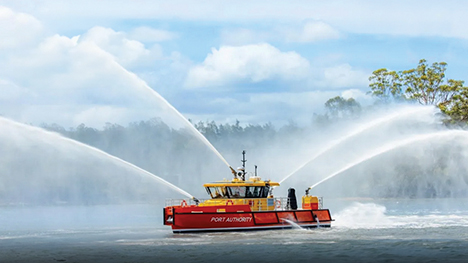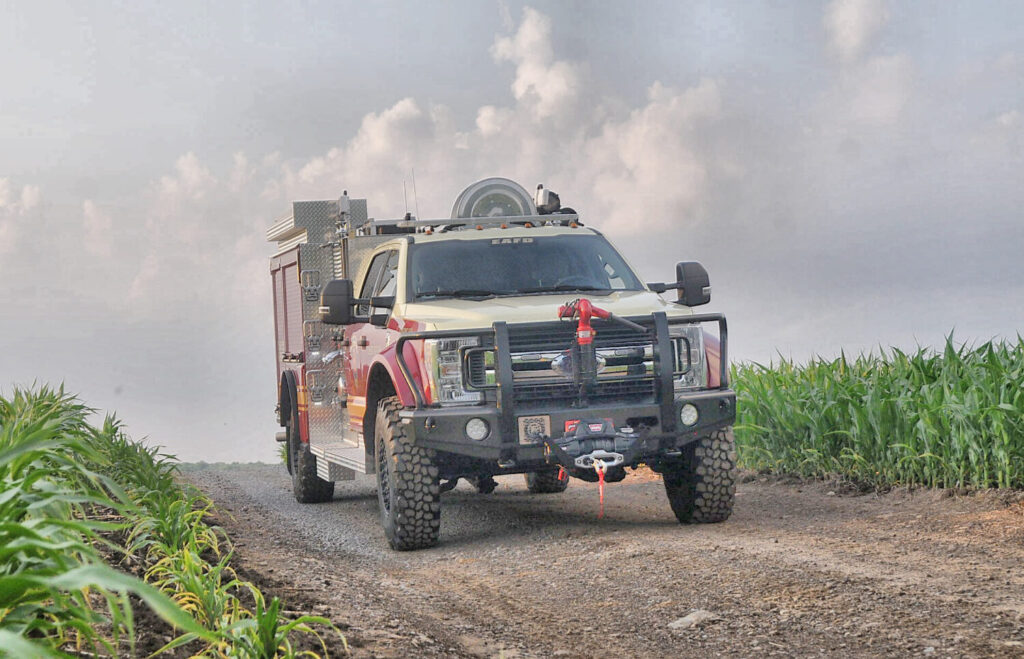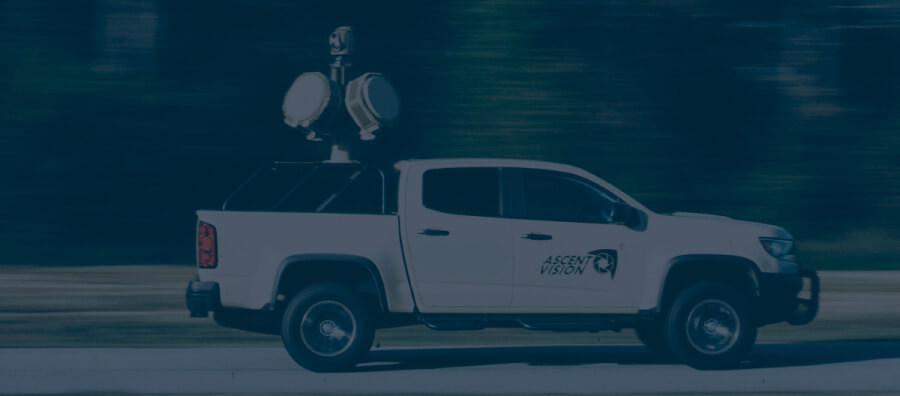
The process of ensuring that products available in the fire apparatus marketplace are fully optimized for their intended use and are of the best possible quality is a fulfilling yet tricky one – just ask Bob Albano, the fire and rescue business development manager at Hendrickson. His expertise focuses specifically on working with fire apparatus manufacturers across the country to ensure that their products are designed to meet the demands of the fire & rescue market. During the FDSOA Virtual Fire Apparatus Conference, Bob shared insights about the company’s pre-marketplace evaluation operations for fire apparatus suspensions in an effort to arm attendees with useful knowledge applicable in the field and at the fire department.
Bob Albano started the conference’s session off by diving into the elements of testing – or rather, what Hendrickson is “doing across all industries to ensure the products survive and have the best performance possible.” Hendrickson’s four main testing domains are: predictability; structural analysis; vehicle dynamics; and equipment/machinery. Hendrickson “heavily invests in their ability to be predictable when designing suspension” to ensure the “model matches real life.” For instance, when checking the stability of a truck, they are able to predict ride, handling and steering performance without tipping the truck over or damaging it in any way. Their method allows them to produce products in quicker time due to the reduced development time and cost. Hendrickson is additionally investing in providing “structural analysis with suspensions as a whole,” granting long term modeling for stress risers and deformations in the metals according to the chassis. The modeling highlights the “hot spots” that indicate fatigue, which motivate further testing that estimates where these “hot spots” will fail and in roughly how long. Thirdly, assessing vehicle dynamics reviews the test rates – or, simply put, the measures – of vertical rate (the flex in suspension), bump steer (degree), roll and lateral stiffness (comfort level) and roll steer – or the relation from the front axle to the back axle (which matters most when making high speed turns since adjusting one axle moves the other). Lastly, to test the equipment/machinery, Hendrickson utilizes test rigs – or shaker rigs specifically for axles, torque rods and trailing arms – that “bump the course to collect data,” to enable a simulator which “allows for what would take six months in the field to be done in six weeks.” According to Bob, showing “our flexibility to bring predictable products to the market is what we’re all about at Hendrickson.”
Bob additionally addressed the industry’s evolution of spring technology towards composite springs. In the past ten to fifteen years, there has been a shift from using multi-leaf springs to parabolic springs, due to the endless investigations and recalls over the inability to treat corroded multi-leaf springs with rust inhibitors. The springs rub off the inhibitors, harden over time (starting off with the spring brackets, then the frame then the springs themselves) and increase the spring rate. The spring rate is the amount of force it takes to move the spring; the higher the spring rate, the harder it is to move and the more uncomfortable the ride will be. Parabolic springs, on the other hand, have gaps in between the springs which prevent anticorrosive material from rubbing off and the springs from rubbing together, consequently requiring a lower spring rate while fueling a soft ride.
Now though, Hendrickson has mastered the utilization of composite springs in trucks and trailers with the goal to roll out composite springs for fire apparatus within the next two years. The transition to composite springs stems from the durability of the product that is “consistent from the day it is built to the day it goes out of service.” Beyond the benefit of an extended lifespan, composite springs save 70% of the suspension’s weight, resist corrosion, have no spring snap and reduce the noise and vibration damping (or the vehicle’s occupant protection from the road’s vibrations). One of the largest concerns in the fire apparatus industry is the truck’s sag resulting from one side hoisting the heavy fire fighting equipment. Composite springs, however, can hold more weight. so they have more deflection which raises the spring rate on one side, making it stiffer to avoid sagging. Hendrickson also has the ability to customize springs if a department desires.
Another large concern in the fire apparatus industry is the cost and time required for maintaining suspensions which, according to countless fire departments nationwide, are just too much. Hendrickson aims to remove the need for suspension maintenance altogether via zero maintenance damping (ZMD), a process Bob explained using the following example: If a shock valve code’s damping characteristic is at one weight rating, then Hendrickson would “develop a shock for a 24,000 pound capacity, load that suspension with 24,000 pounds and develop a spring damping curve that allows you to control the up and down movement of the shock based on that weight rating.” ZMD permits an infinite spring rate in the utilization of the baffles and the air spring to act as a shock and allow an infinite number of shock tunes to occur. ZMD air spring technology provides superior ride quality and uniform damping over the air spring’s life cycle, reduces suspension weight, maintenance and cost, eliminates the need for replacements since it is a no-wear item and is tuned for loaded and unloaded conditions (whereas a shock is loaded only).
The Virtual Fire Apparatus Conference was held on May 18 and 19, 2021, and involved over twenty-five experts who spoke about topics from safety to COVID-19 to emissions. If you were unable to attend, head to FDSOA’s YouTube Channel to watch the sessions available. You can also join FDSOA next year at the Annual Fire Apparatus & Health and Safety Conference on January 9 – 13, 2022, in Scottsdale, Arizona.
To view more posts in this series, click here.




